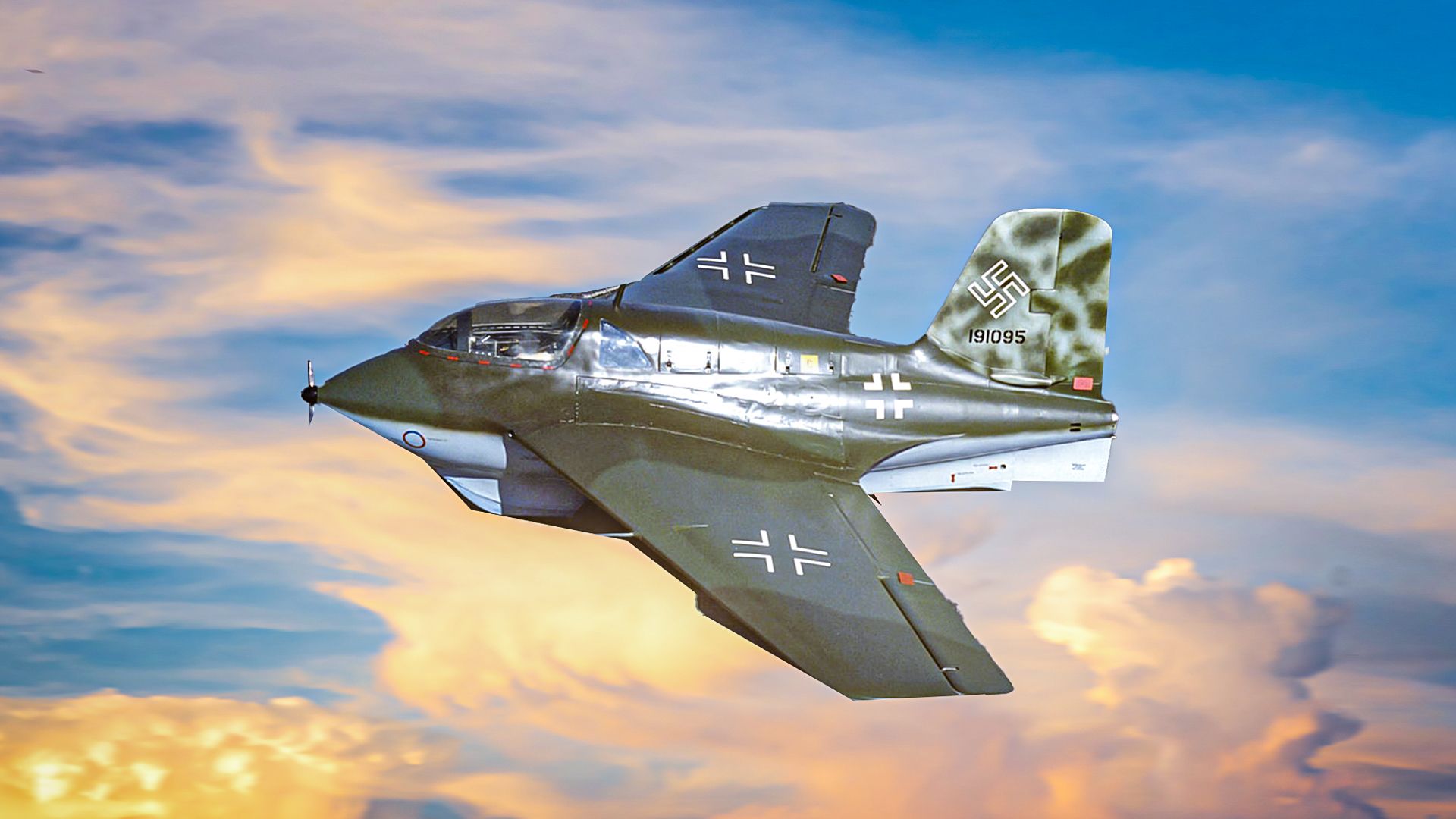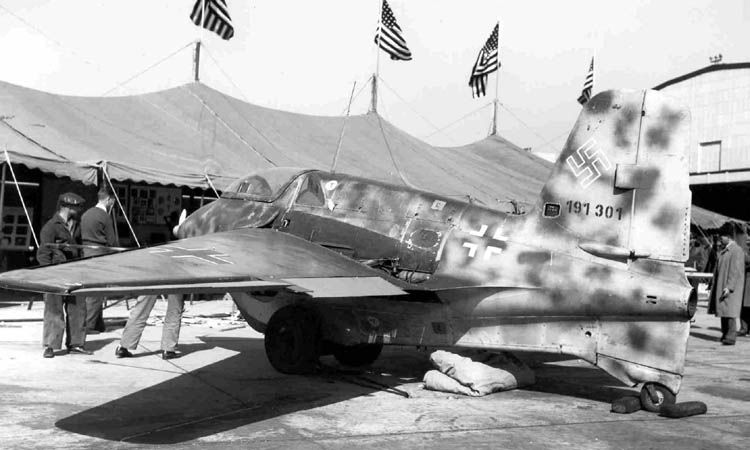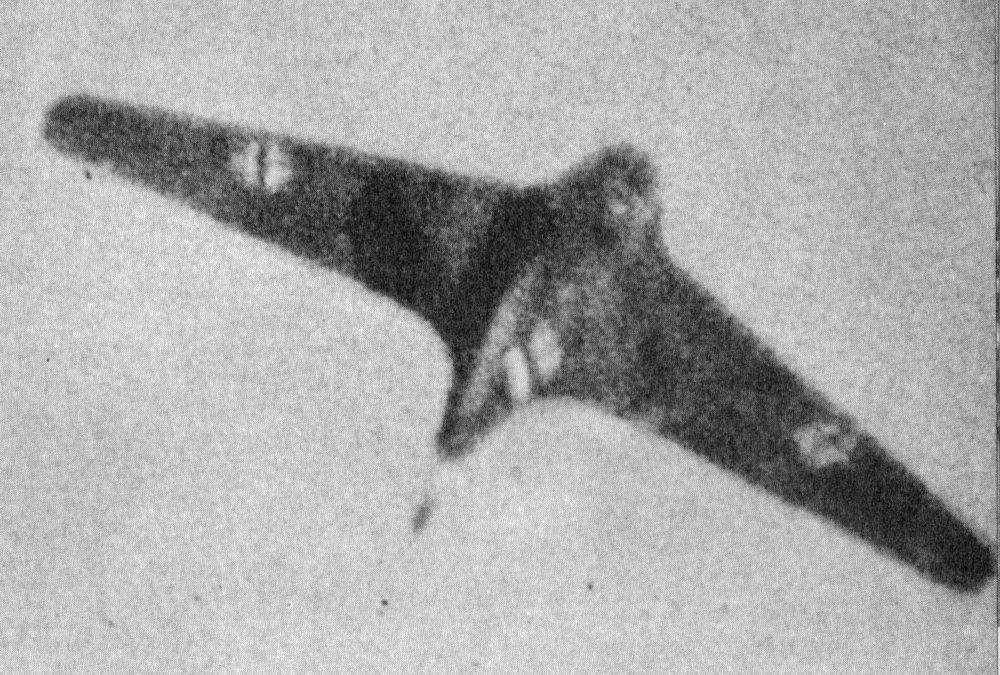Summary
- The Messerschmitt Me 163 Komet was a rocket-powered WWII aircraft with a top speed of 624 mph, making it the first piloted aircraft to exceed 620 mph in level flight.
- The Komet was used as an interceptor fighter against Allied bombers, achieving 16 confirmed air-to-air kills.
- The rocket plane had a volatile fuel combination, leading to numerous accidents and the death of at least nine pilots. Only 10 of the 370 built remain today, all as static displays in museums.
One of the Wunderwaffen (“Wonder Weapons”) of Nazi Germany’s Luftwaffe, along with the Messerschmitt Me 262 Schwalbe (“Swallow”) jet fighter or the Heinkel He 162 Volksjäger (“People’s Fighter”), the Messerschmitt Me 163 Komet rocket-powered jet was the fastest aircraft of WWII.
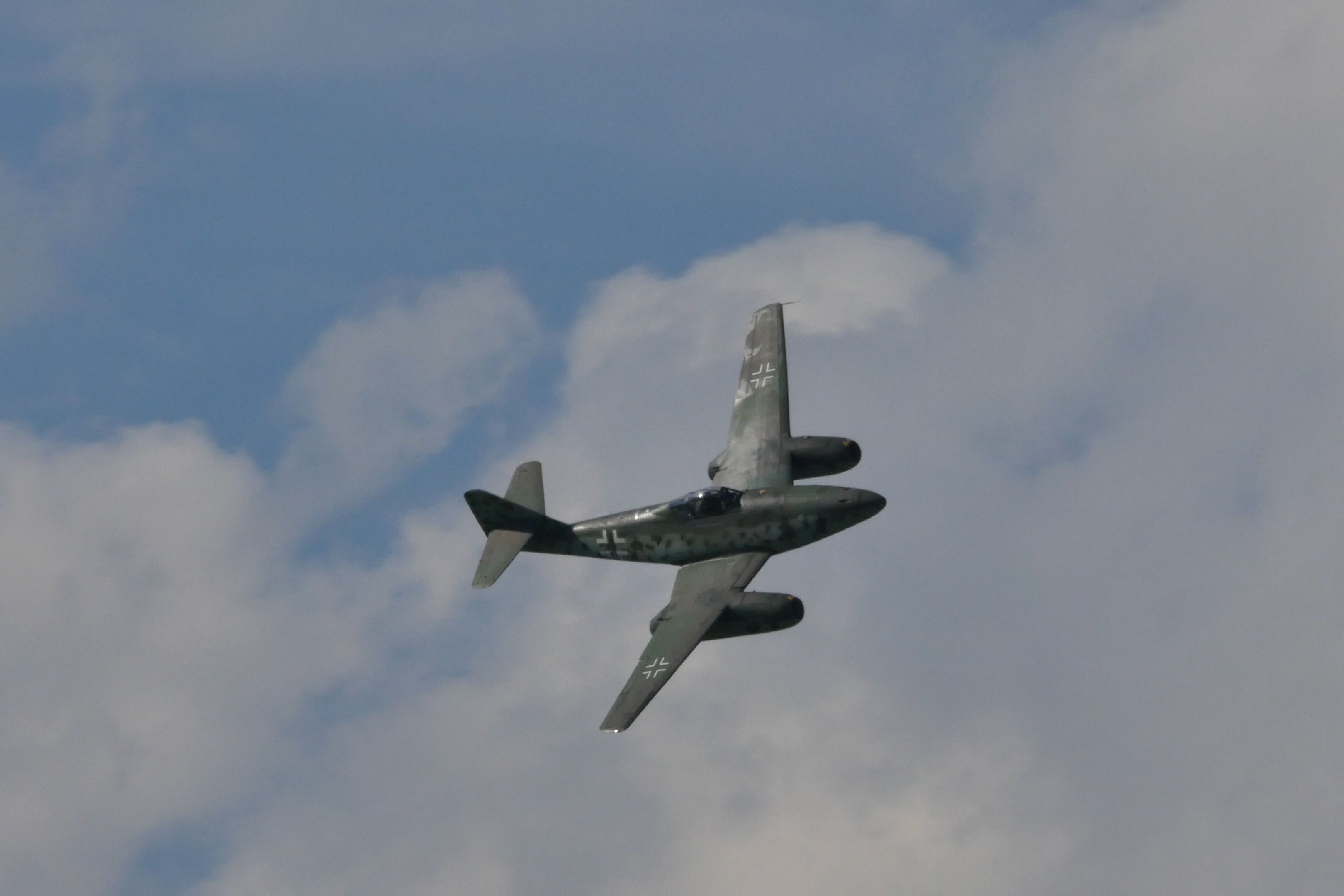
Related
The World’s First Fighter Jet: A Look At The Messerschmitt Me 262
A brief history of the Me 262’s development, with views by top British and German pilots.
Perhaps it’s not surprising that a rocket plane would claim the WWII speed record since it was also a rocket plane (the Bell X-1) that first broke the sound barrier two years after the war ended. Simple Flying now examines the short-lived but still historically significant Komet.
Me-163 early history and specifications
The Messerschmitt Me 163 Komet made its maiden flight on September 1, 1941, and entered into official operational service in 1944. As was the case with the other Wunderwaffen, it was quite fortuitous for the Allies that this warbird didn’t go operational earlier in the war. The Komet was designed by Bavarian aeronautical engineer Alexander Martin Lippisch (2 November 1894 – 11 February 1976)
The Me 163 had the following specifications:
|
Crew: |
1 (pilot) |
|
Fuselage Length: |
18 ft 8 in (5.7 m) |
|
Wingspan: |
30 ft 6 in (9.3 m) |
|
Height: |
8 ft 2 in (2.5 m) |
|
Empty Weight: |
1,905 kg (4,200 lb) |
|
Max Takeoff Weight |
4,309 kg (9,500 lb) |
|
Powerplant: |
1 × Hellmuth Walter Kommanditgesellschaft HWK 109-509A-2 bi-propellant liquid-fuelled rocket motor, 14.71 kN (3,307 lbf) thrust maximum; 980 N (220 lbf) minimum, fully variable |
|
Max Airspeed: |
624 mph (1,004 km/h; 542 kn) |
|
Endurance: |
7.5 mins powered |
|
Rate of Climb: |
16,000 ft/min (81 m/s) |
|
Armament: |
2 × 30 mm (1.181 in) Rheinmetall Borsig MK 108 cannon with 60 rpg |
That max airspeed is the official figure, representing the world speed record at the time. It was attained on October 2, 1941, by test pilot Heini Dittmar; this made the Komet the first piloted aircraft of any type to exceed 620 mph (1,000 km/h) in level flight. *Unofficially* Herr Dittmar would top that in July 1944, hitting an airspeed of 700 mph (1,130 kph)!
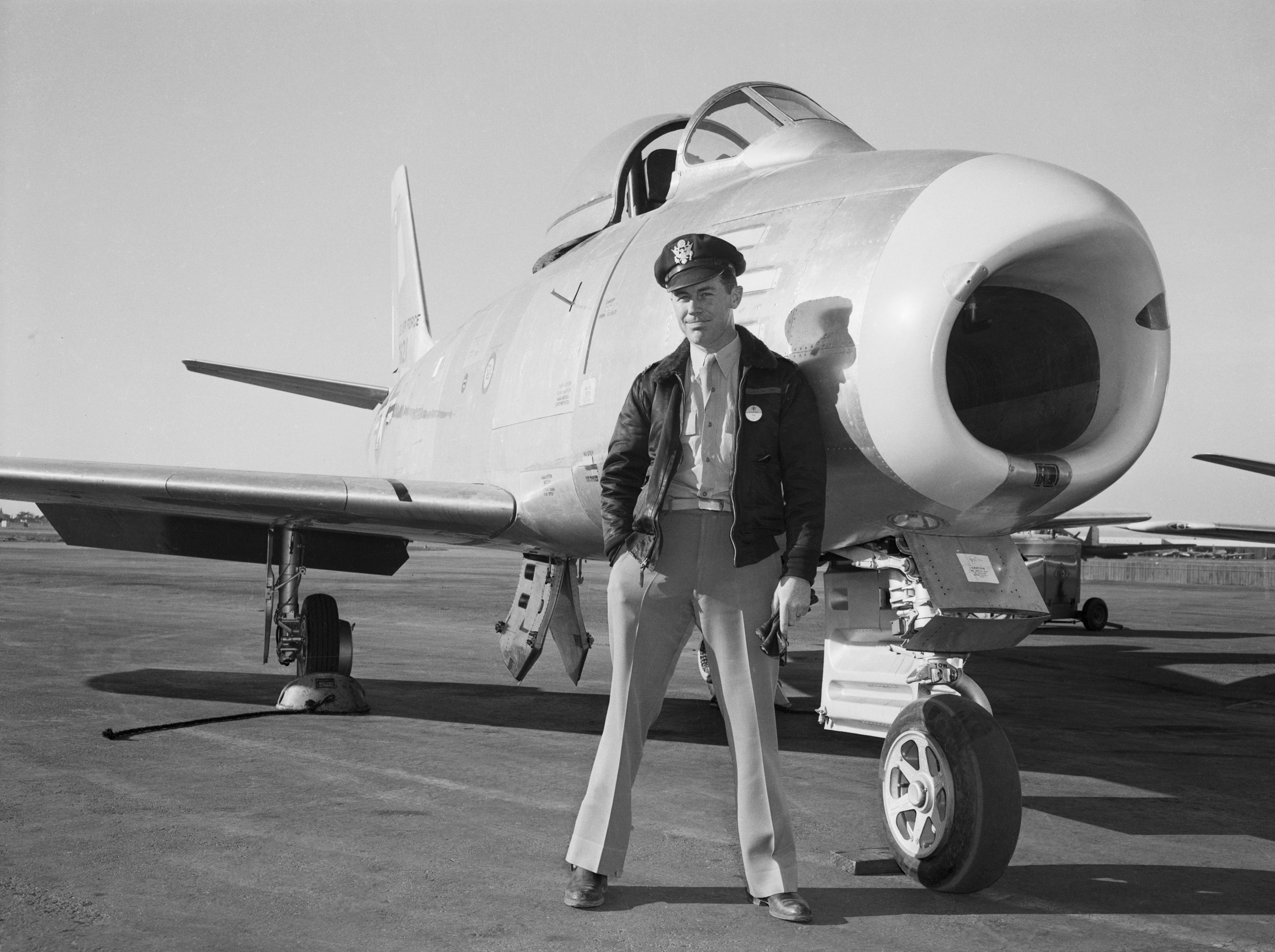
Related
The Various Achievements Of Legendary US Test Pilot Chuck Yeager
Seventy-five years ago, on October 14th, 1947, Charles (Chuck) Yeager became the first pilot in history to break the sound barrier.
Operational performance
The Me-163 also made history as the only rocket-powered aircraft ever to be used as a fighter, more specifically as an interceptor, geared toward attacking Allied bombers like the American Boeing B-17 Flying Fortress and Consolidated B-24 Liberator and Royal Air Force (RAF) Avro Lancaster, as opposed to dogfighting adversarial fighters like the North American P-51D Mustang and Republic P-47 Thunderbolt.
The Komet ended up with 16 confirmed air-to-air kills, most of them B-17s or British de Havilland Mosquitos (the Komet was the only Luftwaffe plane that could match or exceed the Mosquito’s speed). On one occasion in August 1944, the Wunderwaffen managed to kill three Mustangs in a single engagement. Feldwebel (Sergeant) Siegfried Schubert, the single most successful Komet driver, racked up three confirmed victories against Flying Fortresses.
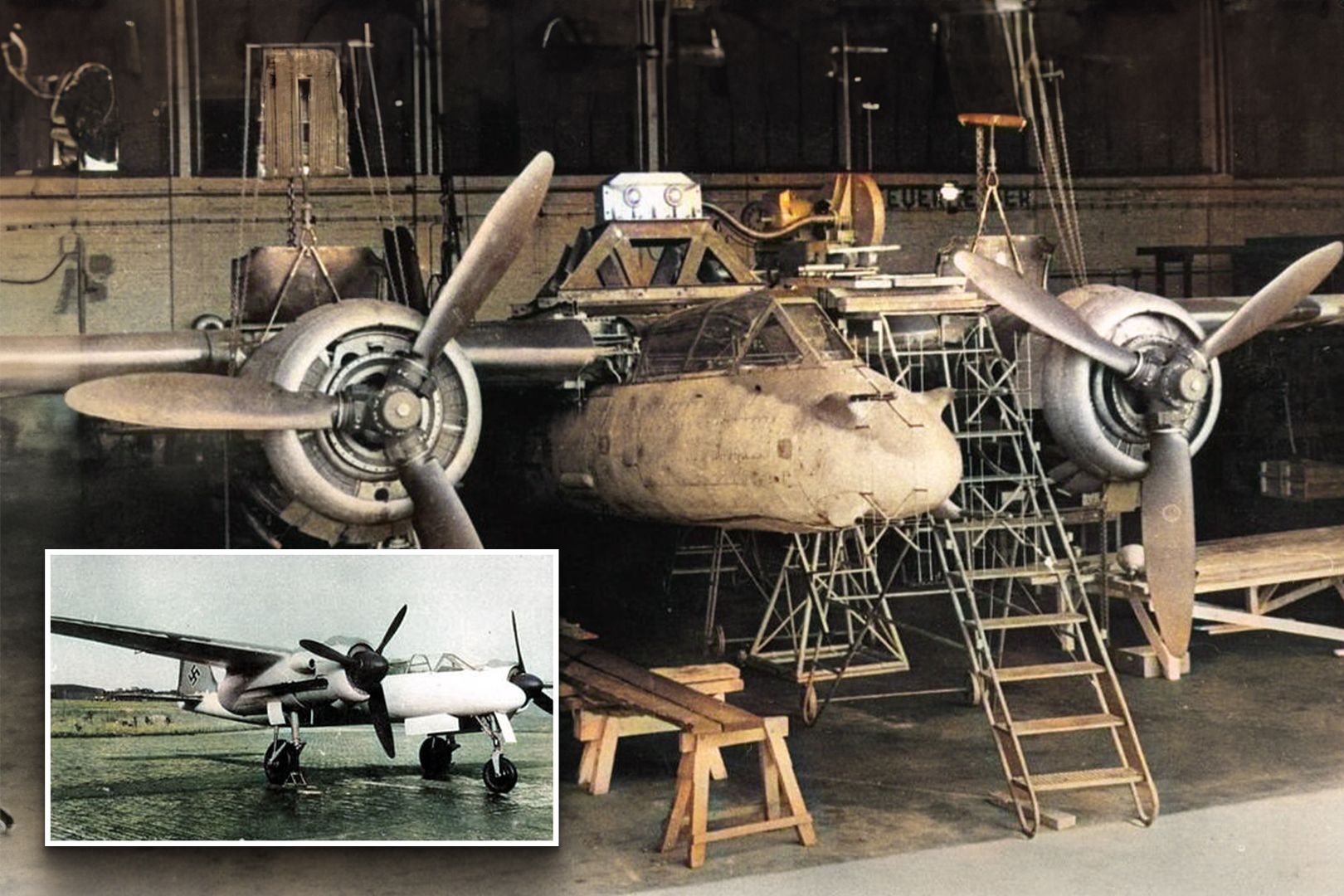
Related
Focke-Wulf Ta 154: Why Didn’t The Germans Succeed In Building Their Version Of The WW2 Mosquito?
The Luftwaffe’s Moskito didn’t have the success that the RAF’s Mosquito did during WWII. This was largely due to the lack of a very basic ingredient.
In exchange, nine Me 163s were shot down in combat, mostly by Mustangs, although at least one was downed by a “T-Bolt,” as seen in this gun camera photo:
As with the Schwalbe, Allied fighter pilots found that the Komet was at its most vulnerable when descending to land.
But it turns out that the deadliest enemy of Me 163 pilots was the Me 163 itself. This was mainly due to its extremely volatile fuel, a combination of T-Stoff and C-Stoff, which was not only explosive but also highly corrosive and toxic, and, to quote the aforementioned Herr Doktor Lippisch:
“If you stick your finger in it, then you get only the bone.”
Accordingly, at least nine Me 163 pilots were killed in accidents, including the aforementioned Feldwebel Schubert (on the same day he scored the last two of his victories, no less).
The lack of landing gear certainly didn’t help either, as the flimsy-looking wheeled dolly was jettisoned upon takeoff, forcing the pilots to land directly on the fuselage and go into a keel skid.
But it gets worse from there. According to Don Hollway of HistoryNet:
“Ascents were so rapid that pilots, in their unpressurized cockpits, got a touch of the bends as nitrogen bubbles formed in their bloodstreams. Diet was restricted to reduce intestinal gas, lest they blew up like balloons.”
Despite its frightening potential, the Komet has to be assessed as an overall failure.
Where are they now?
Out of roughly 370 Me 163s built, 10 survive today, all as static displays (i.e., none airworthy, and they’d be too much of a potential liability even if they were hypothetically restored to flying condition) spread out across museums in Australia and Canada, der Deutschland, the UK, and the US. The one I can personally vouch for (as can be seen from the following pics), is Werknummer (serial number) 191301, at the Smithsonian National Air and Space Museum‘s Steven F. Udvar-Hazy Center in Chantilly, Virginia.
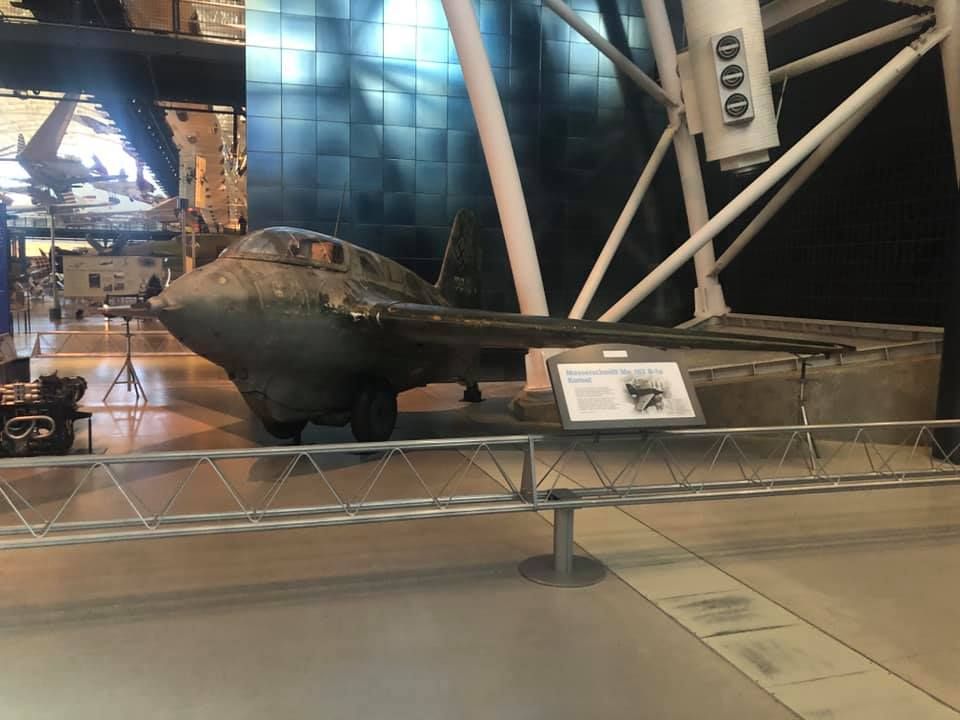
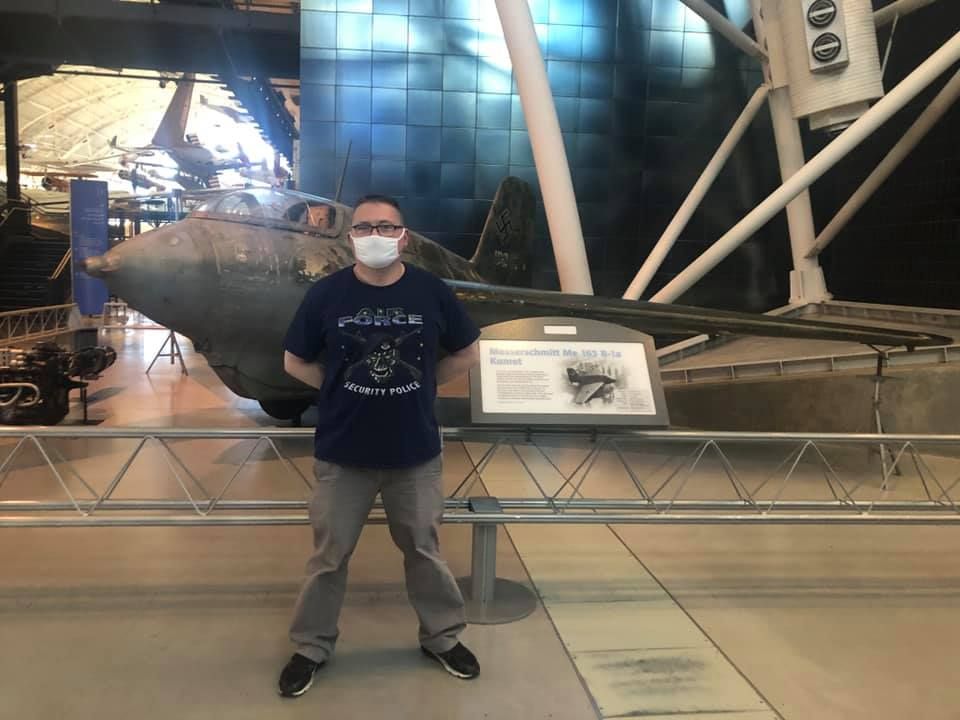
For the benefit of our readers not residing in the US, some of the other museum options are:

